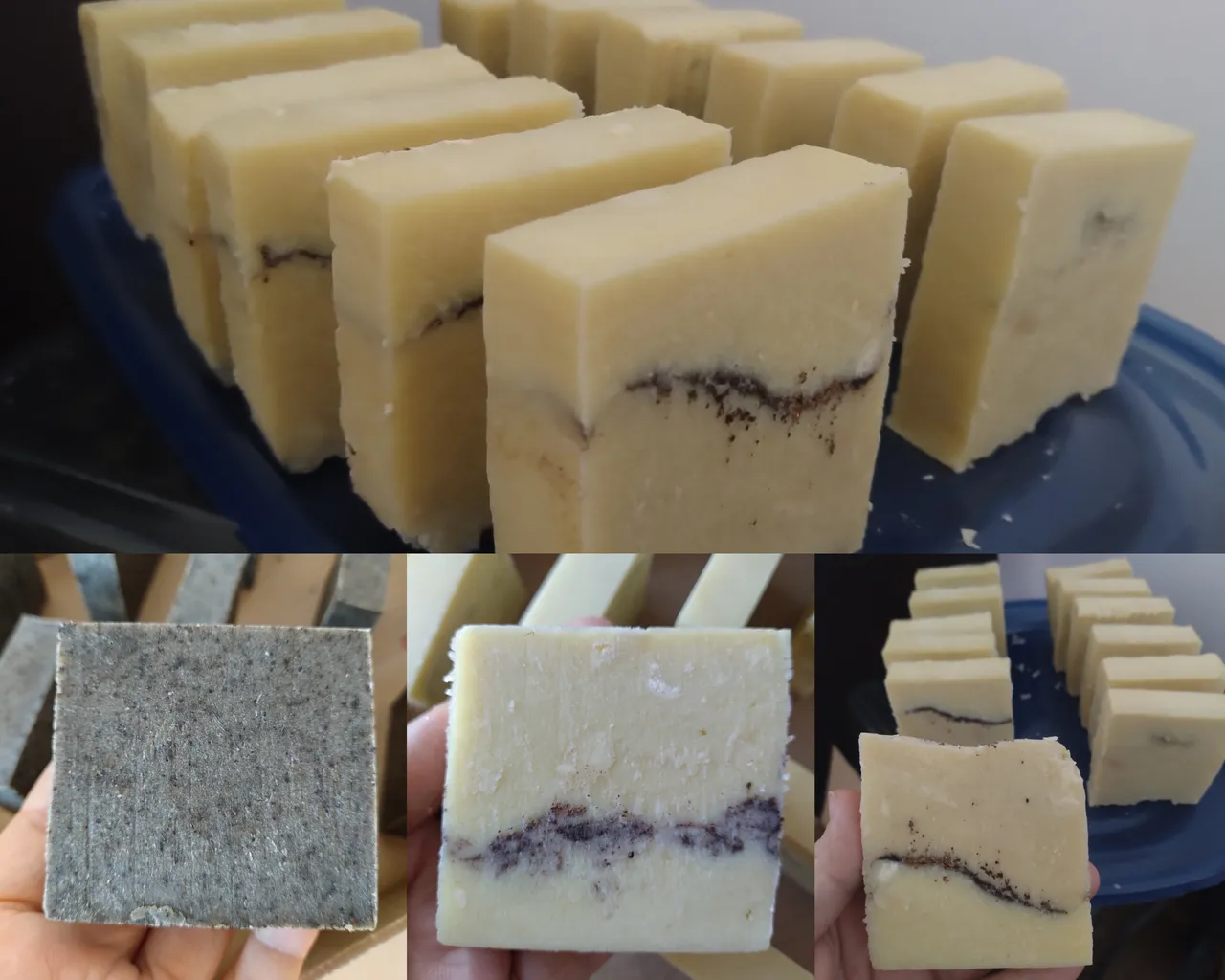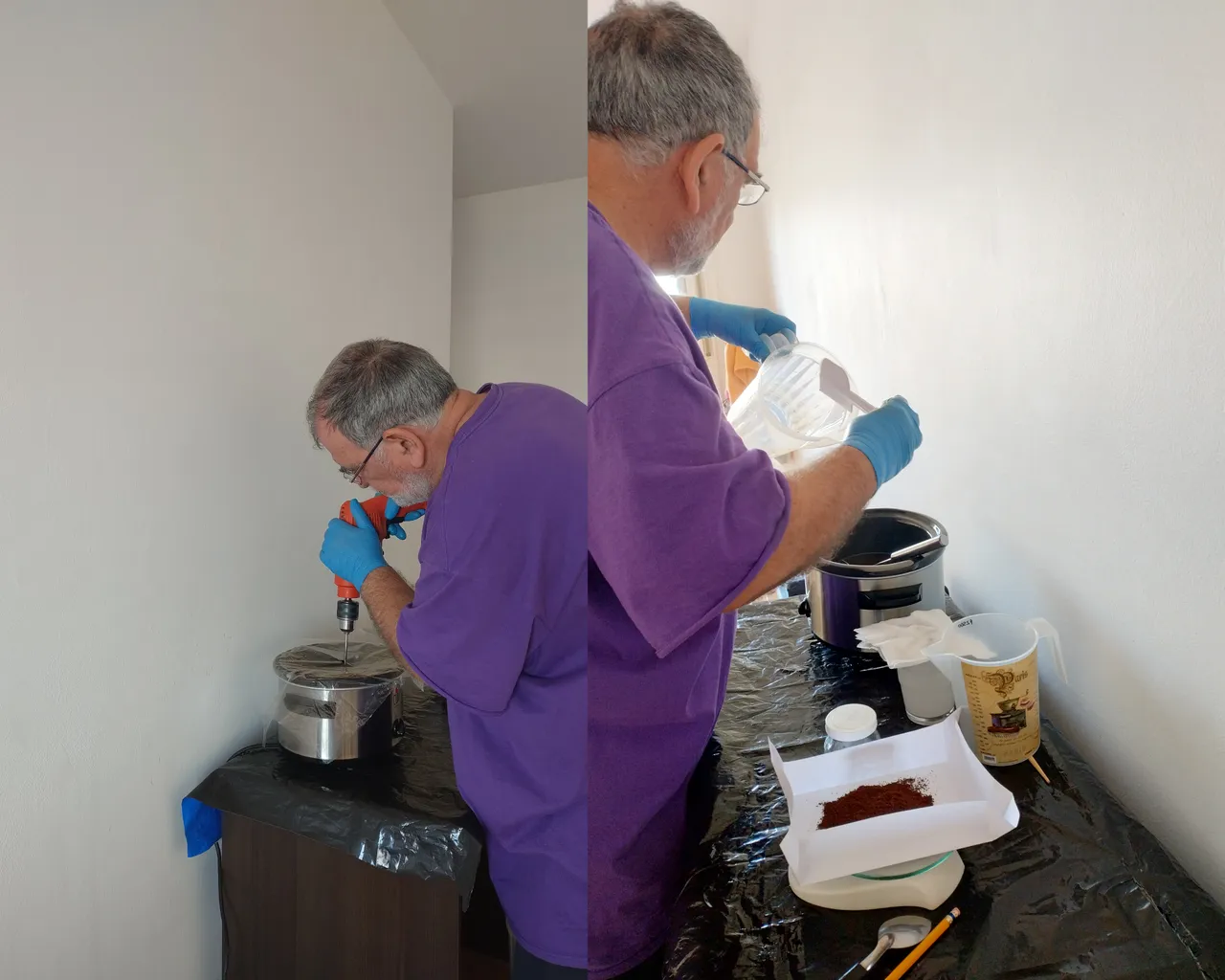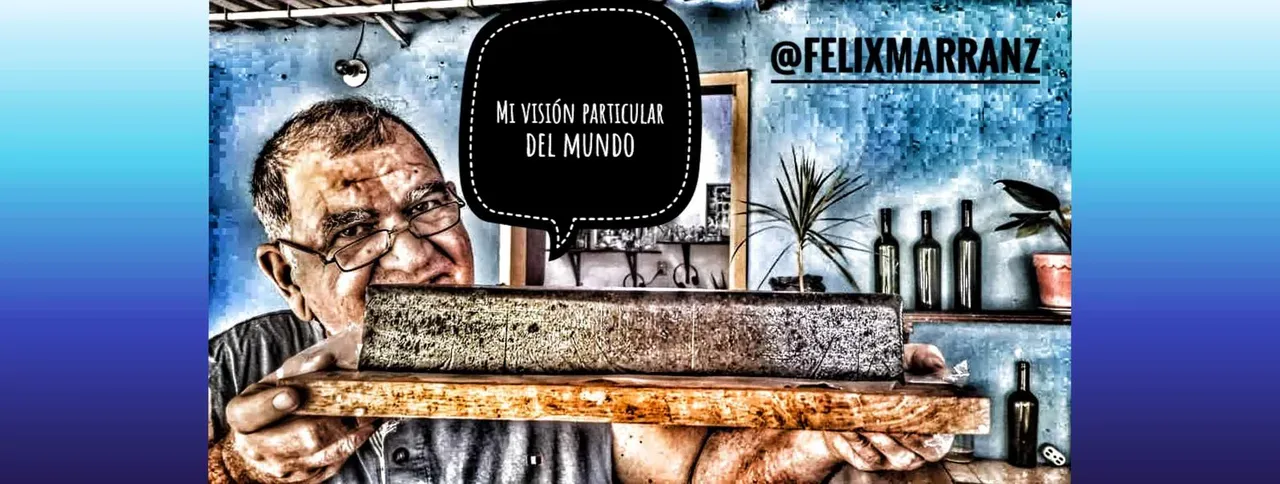Another day in the life of a #HIVE soap maker, which may not be as exciting as that of a Soviet dissident, but it is my own, much more pleasant and without hardship, for which I am grateful.

Although I am not bound to an immutable routine, my day usually starts before dawn, preparing or drinking coffee. If I made soap the day before, the first thing will be to take it out of the mold and observe its appearance, texture and if it is suitable for cutting.
One of the moments I enjoy the most is when I discover the appearance of the soap. It is not always the same, because when using natural ingredients that always have slight differences or simply climate changes, even if the formula is the same, slight differences will appear, generally attractive and sometimes rare beauties.

After cutting the pieces and letting them dry, so that they reach an appropriate consistency, I usually check the other soaps I have drying and see if they are ready to be packaged.
After coffee and other breakfasts, I usually start the search for some new ingredient to incorporate into the soap; today it was rhubarb, a garden vegetable similar to chard, but with a red stem. A plant of Asian origin that has various uses in cooking and oriental medicine, including in the making of candies, and that apart from some properties, gives the soap a peculiar red color that is difficult to obtain in a color chart.

A couple of weeks ago, my work as a soap maker had nothing to do with chemistry or cosmetics, but with physics, drawing and carpentry, since I was preparing the molds in which I will pour the soap and a cutter of individual pieces that have the same size and weight.
When demand increases and the work of cutting one by one becomes tedious, it will be time to sit down and draw and build a string cutter or guitar with which you can cut 10 or 12 soaps at a time and make this part of the process more comfortable and give the product a neater finish. A sonorous adjective that I am hearing with increasing frequency and have adopted in my vocabulary.

The coming days I have to dedicate to working on the image and clothing of the product, I want to change several details of the wrapping and packaging, so I have to consider papers, colors, designs, prints, maybe a box that protects them and adds a touch of luxury and vanity. All in all, even if it's just a soap, it can be a different experience and a small luxury to enjoy in the privacy of a relaxing bath or when removing makeup from your face.
My own ego dreams of making a top-notch soap. Not the most expensive in the world, which by the way, I don't think anyone uses, with gold and small diamonds it must be quite rough and an outrageous cost of thousands of dollars. But yes, a 100 dollar coconut soap like the one I once found in a soap catalogue, of course it wasn't just any coconut, but Coco Chanel.

Before making my black soap for the first time, I did some research on the different soaps of this color or name that are produced in the world and the properties of their ingredients, to then adapt it to my reality and available ingredients. Black soap is made in different ways around the world: in the Far East with bamboo charcoal, in Africa with shea butter and black olive paste, and in Russia, in cold Siberia, they prepare a paste with various vegetables from the steppes.
My current version includes olive oil from Mendoza, coconut oil, activated charcoal, honey, and the best coffee I found on the market, affordable for my budget, La Virginia roasted. No grounds or dregs, just freshly brewed coffee and some ground coffee for an exfoliating effect, which at the same time stimulates blood circulation under the skin, which together with the aroma is very stimulating. Some people claim that the massage helps fight cellulite, I have not proven it, nor do I affirm it, but you can try it.
Due to its ingredients, its texture is a little softer than other soaps and many people use it for the face because of the detoxifying effect of the charcoal that absorbs the impurities it comes into contact with.

And since it's time to go out and manage some purchases, I'll leave the part related to sales to various clients and fairs for another post. Where, in addition to the necessary monetary income, you meet interesting people and sometimes you find friends willing to help and collaborate. Experiences that can't be priced, like Mr. Guillermo. Guille for clients and friends, about whom I'll tell you another day.
My native language is Spanish and for the English version I use Google Translate
Otro día en la vida del jabonero de HIVE
Otro día en la vida del jabonero de #HIVE, que no será tan apasionante como la de un disidente soviético, pero es la mía, mucho más placentera y sin penurias, por lo que estoy agradecido.

Aunque no estoy sujeto a una rutina inamovible, mi día suele iniciar antes del amanecer, preparando o tomando café. Si el día anterior hice jabón, lo primero será sacarlo del molde y observar su apariencia, textura y si está en condiciones de cortarlo.
Uno de los momentos que más disfruto, pues es cuando descubro la apariencia que tendrá el jabón, no siempre es igual, porque al usar ingredientes naturales que siempre tienen leves diferencias o simplemente los cambios climáticos, aunque la fórmula sea la misma, aparecerán leves diferencias, generalmente atractivas y en ocasiones raras bellezas.

Luego de cortar las piezas y dejarlas secar, para que alcancen una consistencia apropiada, acostumbro revisar los otros jabones que tenga secando y ver si están listos para empacar.
Después del café y otras del desayuno, suelo comenzar la búsqueda de algún nuevo ingrediente que incorporar al jabón; hoy fue el ruibarbo, un vegetal de huerta parecido a la acelga, pero con el tallo rojo. Una planta de origen asiático que tiene diversos usos en la cocina y medicina oriental, inclusive en la elaboración de caramelos, y que aparte de algunas propiedades, aportara al jabón un peculiar color rojo complicado de obtener en una carta de colores.

Hace un par de semanas atrás, mi trabajo de jabonero no tuvo que ver con la química o la cosmética, sino con la física, el dibujo y la carpintería, ya que estaba preparando los moldes en que vaciaré el jabón y un cortador de piezas individuales que tengan una misma medida y peso.
Cuando la demanda aumente y el trabajo de cortar uno a uno resulte tedioso, será el momento de sentarse a dibujar y construir un cortador de cuerdas o guitarra con que se puedan cortar 10 o 12 jabones por vez y hacer esta parte del proceso más cómodo y darle al producto un acabado más prolijo. Sonoro adjetivo que estoy escuchando con creciente frecuencia y he adoptado en mi vocabulario.

Los días venideros tengo que dedicarlos a trabajar en la imagen y vestimenta del producto, quiero cambiar varios detalles de la envoltura y empaque, por lo que hay que considerar papeles, colores, diseños, impresiones, tal vez una cajita que los proteja y aporte un toque de lujo y vanidad. Total, aunque solo sea un jabón, puede ser una experiencia diferente y pequeño lujo que disfrutar en la intimidad de un relajante baño o a la hora de retirar el maquillaje del rostro.
Mi propio ego sueña con hacer un jabón de categoría. No el más caro del mundo, que por cierto, no creo que nadie lo use, con oro y pequeños diamantes debe ser bastante áspero y un despropósito de miles de dólares. Pero sí, un jabón de coco de 100 dólares como el que encontré una vez en un catálogo de jabones, claro que no se trataba de cualquier coco, sino de Coco Chanel.

Antes de hacer por primera vez mi jabón negro, estuve investigando acerca de los diferentes jabones de este color o nombre que se producen en el mundo y las propiedades de sus ingredientes, para luego adaptarlo a mi realidad e ingredientes disponibles. En el mundo se hace jabón negro de diferentes maneras: en el lejano oriente con carbón de bambú, en África con manteca de karité y pasta de aceitunas negras y por Rusia, en la fría Siberia, preparan uno en pasta con diversos vegetales de las estepas.
Mi versión actual incluye aceite de oliva de Mendoza, aceite de coco, carbón activado, miel y el mejor café que encontré en el mercado, accesible a mi presupuesto, La Virginia tostado. Nada de posos o borras, café recién colado y algo de café molido para un efecto exfoliante, que a la vez estimula la circulación de sangre bajo la piel, lo que junto al aroma es muy estimulante. Hay quienes aseguran que el masaje contribuye a combatir la celulitis, yo no lo he comprobado, ni lo afirmo, pero pueden probar.
Debido a sus ingredientes, su textura es un poco más blanda que otros jabones y muchas personas lo emplean para el rostro por el efecto desintoxicante del carbón que absorbe las impurezas con que entra en contacto.

Y como ya va siendo hora de salir a gestionar algunas compras, dejaré para otra entrega la parte relacionada con las ventas a clientes diversos y ferias. Donde, además del ingreso monetario necesario, se conocen personas interesantes y a veces se encuentran amigos dispuestos a ayudar y colaborar. Experiencias a las que no se puede poner precio, como el Señor Guillermo. El Guille para clientes y amigos, de quien les platicaré otro día.

Images of my property. Banner courtesy of @isauris
Imágenes de mi propiedad. Banner cortesía de @isauris